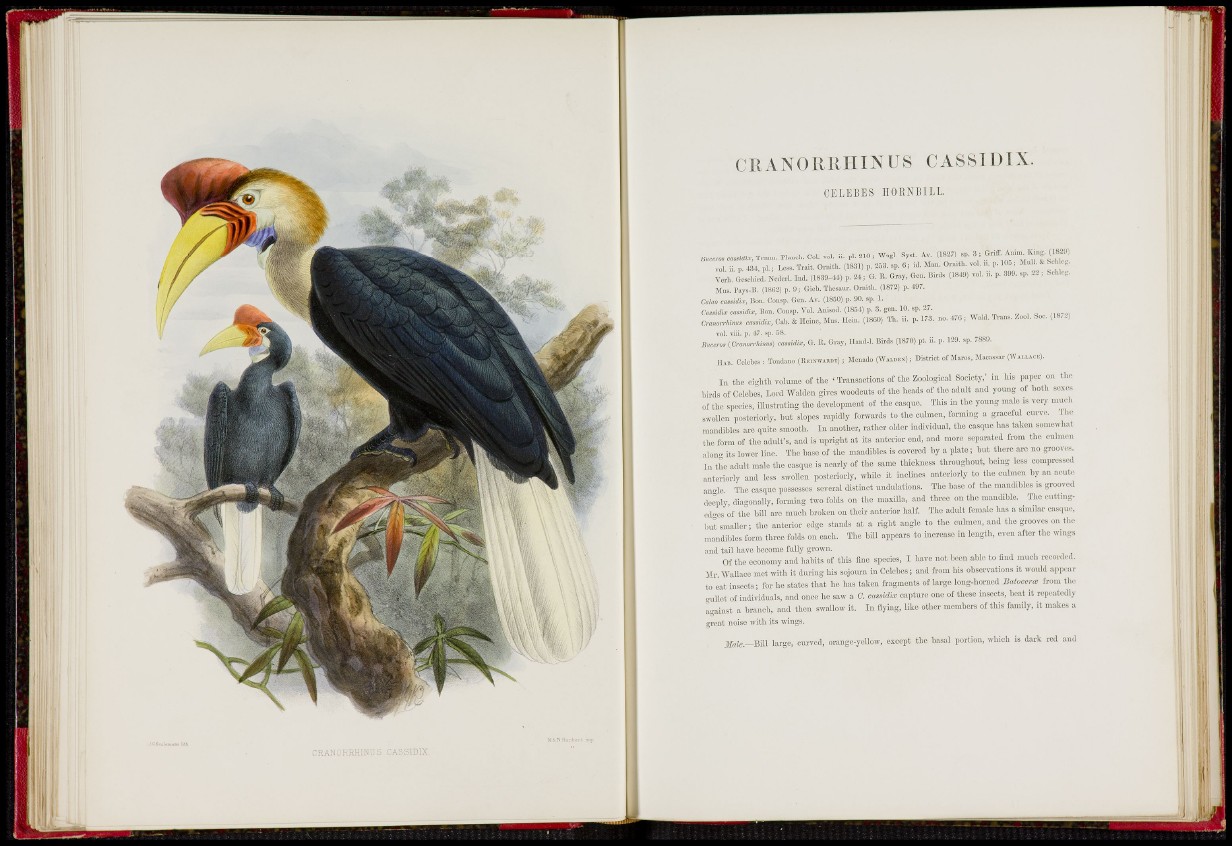
CRANOHRHIN-.IS CASSIDIX
CIIANORRUINUS CASSIDIX.
C E L E B E S IIOEKISILL
«,.™„-i».T™„.Pl.»c.,.Cal. ,01. H. ,1.210, W-gl. Spi. A,. (1827) .p. 3 i
voi li p. -131, Pl.l io». T»i.. 0,„i.h. (1831) j. 203. .p. 6, U. M.„. Or,,,«., voi. „. p. IO»; M„1 & bo
Tori, acohiod. Nodd. M . (1839-41) p. 24 ; (ì. E. G»y. Go„. BMs (W-IS) ,ol. il. p. 399. -p. ¿2 , Sold-s.
Mu.. Pays-B. (1802) p. 9, Giel). Thosmi. Oinitli. (1872) p. •197.
Cairn caMix, Bon. Comp. Gen. Av. (1850) p. 90. .p. 1.
CaUix oaaiiix, Bon. Consp. Voi. Ani.od. (ISSÌ) p. 3. gon. 10. >p. 27.
Cramn-;«». cauUix, C«b. & Homo, Mn». Iloin. (1800) Th. "
voi. vili. p. 47. sp. 58.
,.173. no. -1.70 ; Wald. Tram. Zool. Soe. (1872)
Iì,:cm, (e™«o.-rf.i«») G. 11. Gray, llandJ. BMs (1870) pi. ii. p. 129. sp. 7889.
c) ; Mcnado (WALDEM); Dlslrlct oi'Maros, Macasi
R (WALLACE).
LLAN. Cokbcs : Tondano (EBIN«
In th» dglitliTolumo of t i e 'TmnsactioiisoftlloZoolosic.il Socioty," in his paper on ll.o
birds of Coioijcs, Lord Waldoa gives woodcuts ol tlic heads ot the adnlt and yonng of hoth sexes
of the speeics, iUnstrating tile deyelopment of tllc cas,nc. This in the yonng male is TCry innch
swollen posteriorly, but slopes rapidly forwards to the onlmen, forming a gracefnl curve. The
mandibles ate quite smooth. In another, ratiier older individual, the oasqne has taken somewhat
the form ot the adult's, and is uprigiit at its anterior end, and mote separated from the cnb.u.n
•üon- its lower line. The base of tlie mandibles is coycred hy a plate i hut there ore no gtooycs.
In the adult male the easqne is nearly of the same thickness throughout, being less compressed
anteriorly and less swollen posteriorly, while it indines anteriorly to the enimen hy an aente
an»le. The easqne possesses several distinct undulations. Tile base of the mandibles is grooved
deeply diagonally, forming two folds on the maxilla, and throe on the mandible. Tlie enttinged"
cs ¡f the hill are much broken on their anterior half. The adult female has a similar easqne,
hut smaller; the anterior edge stands at a right angle to the culmen, and the gi-ooves on the
mandibles form three folds on each. The bill appears to inerease in length, even after tllc wings
and tail have beeome fully grown.
Of the economy and habits of this fine speeics, I have not been able to find mueh recorded.
Jlr Wallace met with it during his sojourn in Celebes; and from his obsetvalions it would appear
to cat insects; tor ho states that ho has talcen fragments ot largo long-homed Baloaral from the
•mllet of individuals, and once he saw a 0. m »mx eaptnre one of these insects, boat it repeatedly
against a braneh, and then swallow it. In flying, like other members of this family, it makes a
great noise with its wings.
Ifoie.—Bill large, curved, orange-yellow, except the basal portion, which is dark ted and